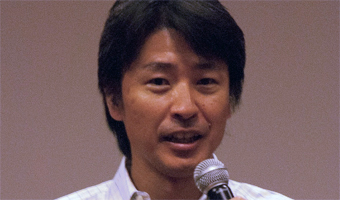By Kelley Bodwell
Ask a room full of writing teachers to name their biggest challenge, and they’ll likely respond with an exhausted sigh, “grading papers.”
Despite the long hours required of teachers to give thoughtful feedback, little research has been conducted to determine what types of feedback are most helpful for students.
In a lecture hosted by the English Language Improvement Program (ELIP) in the Linguistics Department and the English Department, Dr. Paul Kei Matsuda of Arizona State University unlocked some secrets to giving feedback that is both helpful for students and sustainable for teachers in his lecture on “Giving Feedback to Second Language Writers: Moving from Research to Practice.”
Matsuda questioned the use of typical writing feedback about grammar that offers only corrections with no comments or explanations, stating that it often does not lead to learning. This could occur because students do not do anything with the feedback, do not understand the feedback, or are not ready to learn certain structures. Readiness is particularly important. If someone is not ready to learn, they are more likely to ignore the feedback, which will not lead to learning.
Determining areas of readiness for students can be challenging, but Matsuda listed two “paradoxical rules of thumb” a teacher can follow in order to determine when to give feedback: 1) when a student is inconsistent in correctly using a particular grammar form, and 2) when a student consistently makes the same errors. These mistakes signify closeness to learning those grammar structures and therefore are likely productive areas on which to focus.
In addition, he suggested that engagement for students is key in language learning. While giving feedback alone does not guarantee a student will learn a structure, the process of engagement while students revise could contribute to learning on some level.
One way Matsuda encourages engagement in his classroom is to require students to make an appointment with him if they want to receive feedback on a final paper. If students choose to do so, they must also come with a purpose for wanting to revise. By doing so, students are forced to examine their paper more closely and determine the weaknesses they desire to strengthen, thus promoting engagement.
He emphasized the importance of not grading grammar when possible, primarily because students will resist taking risks when it could lead to penalization. Nonetheless, he still gives grammar feedback but focuses on prioritizing it towards mistakes that affect meaning. He also praises students when they use grammar correctly.
In addition to giving feedback on papers, he stressed teaching the metalanguage of grammar learning within the classroom. If students understand how language is learned, he argued, this could help them become more autonomous in their writing, instead of relying on constant feedback from teachers.




















Comments